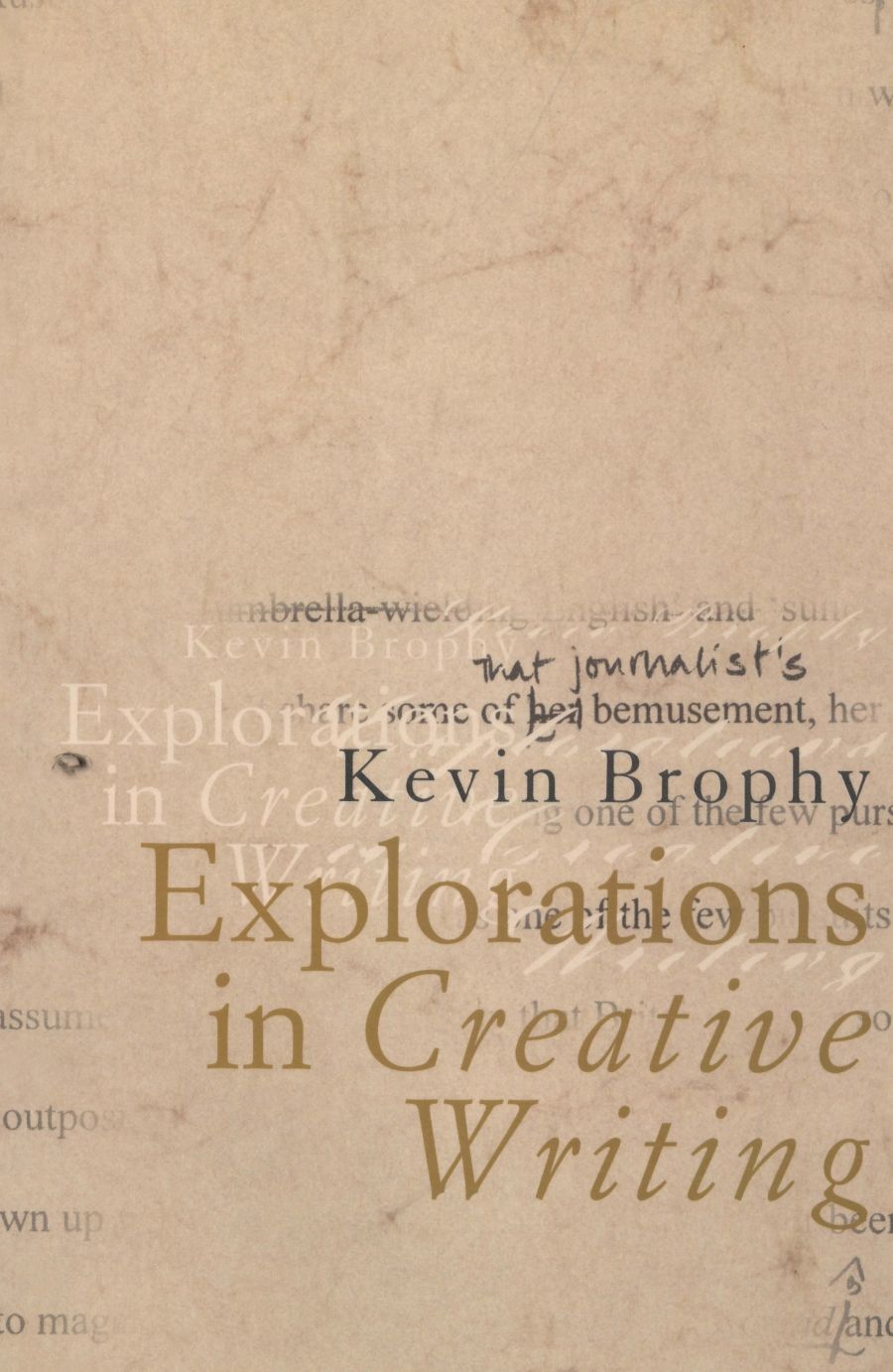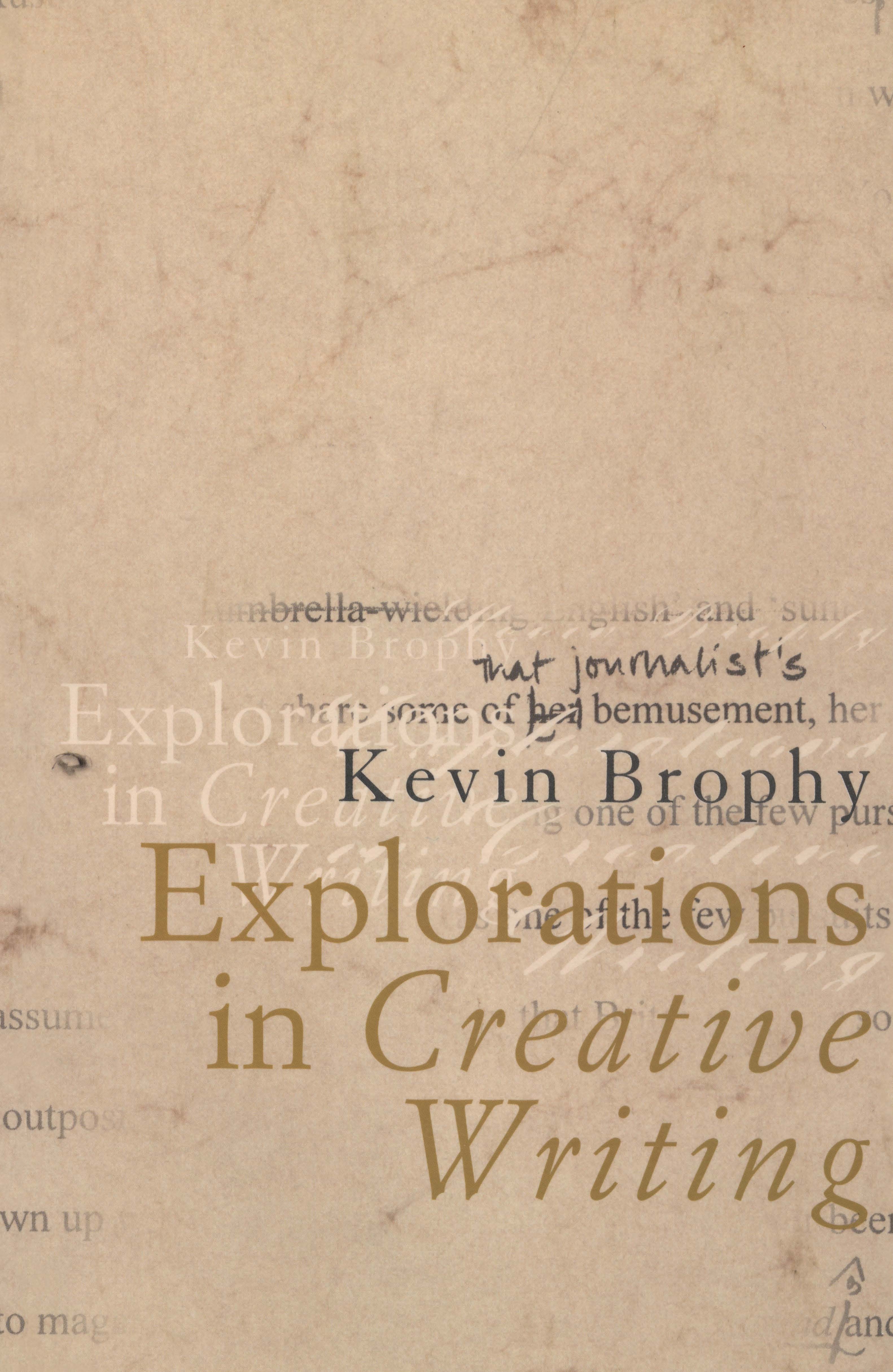
- Free Article: No
- Contents Category: Essay Collection
- Review Article: Yes
- Article Title: Creative Choices
- Online Only: No
- Custom Highlight Text:
Kevin Brophy shows us his skills as an entertainer in Explorations in Creative Writing. He has read widely and has a diverse collection of tales to tell, from the mundane to the fantastic. The story, anecdote and fragment are all part of his performance. We shift between a reading of Kafka’s ‘Metamorphosis’, to the ‘agenda of the couch’ and even to writers’ accounts of visits to analysts (Lacan’s consulting rooms – shabby!). Like the best entertainers, Brophy knows how to tell a good story. His writing has an admirable lightness of touch, alternately reflective and playful, and conveys a sense of the vitality of its subject matter.
- Book 1 Title: Explorations in Creative Writing
- Book 1 Biblio: Melbourne University Publishing, $34.95 pb, 246 pp
- Book 1 Cover Small (400 x 600):

- Book 1 Cover (800 x 1200):

The concerns of this theatre are reading and writing, themes that constantly merge into one another. In the initial essay, ‘Looking at Sophie’, Brophy writes about being a father to a daughter. Recalling an incident in which he loses his temper with his daughter and has a tantrum himself, he suggests that parenting is a model for the author ‘whose characters have got riotously out of control – but in ways that can make the author see, briefly, what he or she is’. Reading is gestured towards here as an activity that can potentially connect the reader with some understanding of what it means to be alive in the world. This idea is elaborated and explored in the other essays in this section, ‘Reading Writing’, particularly in ‘Medieval Thinking and the Novelisation of the Poem’.
Throughout this section, Brophy’s literary analysis is excellent: it is considered, vivid and exciting. Throughout the entire book, Brophy’s use of a singular image or word and how he puts it to work are commendable. In ‘Medieval Thinking’, he begins with Sylvia Plath’s poem ‘Stars Over the Dordogne’ and its image of stars falling from the sky. Through his reading, this is made to unfold into a theory of poetry – the suggestion that poetry draws upon medieval belief in the connections and infusions between all things. This is contrasted with the tendency towards ‘novelisation’ in contemporary poetry. This essay is a highlight; it is moving and beautifully executed. Such innovative, considered and tightly written critical work is a pleasure to read.
The two other sections – ‘Making Writing’ and ‘Talking Writing’ – involve Brophy’s own creative writing. Here he includes excerpts from his notebook and some stories and poems, as well as commentary on them, before moving on to questions about teaching creative writing and teaching it at university (Brophy is a creative writer, and the coordinator of the University of Melbourne’s creative writing programme).
Questions of form are common preoccupations throughout the book. There is, for instance, a consideration and speculative outline of the sentence and its lineage, the possibilities of the line in poetry and the subversive potential of prose poetry. It is a surprise to find that this does not extend to the other major form he draws upon: the essay, that ‘irregular, or undigested piece’ (OED). Brophy’s analyses are exploratory, lively and insightful. It would be interesting to read his introduction to the essay form, as well as to read why he chooses to use it, as opposed to another form.
Commentary on the hybrid form of Explorations itself would have been helpful. The book contains essays that extend literary writing towards criticism, history and philosophy, alongside pieces of creative writing. In the introduction, Brophy indicates how we should read this: ‘I want creative writing to argue its case not by stating its case theoretically or philosophically but by showing itself.’ This implies that creative writing can stand alongside analysis: both are distinct ‘experiences’, and one does not need to be underwritten by the other. As they appear in the book, however, they seem to be working in slightly different directions. Some of these pieces have been used in creative writing lectures and workshops, and may simply have required more attentive editing before being included here. Or it could be that the consequences of placing these different modes together needs to be more considered. It might be useful to turn here to the field of ficto-criticism, as outlined by Heather Kerr and Amanda Nettelbeck in The Space Between (1998).
Though creative writing and analysis are presented side by side, Brophy is more equivocal about creative writing being taught alongside literary studies in the university. He astutely observes: ‘There are deep and radical changes happening under the surface in both tertiary education and the literary culture of Australia as a result of the development of creative writing courses.’ The popularity of these courses continues to increase. Yet the mature new novel is harder to find. Reading this book, with its attention to good writing, made me hungry to read some – but not just the creative writing of poetry or memoir. Whilst first books of fiction, poetry and life-writing (all categories that are taught at universities) are prominent in review pages, writers’ subsequent novels command less attention. I wonder if the focus on linking creative writing and teaching is obscuring the place and potential of the mature novel.


Comments powered by CComment